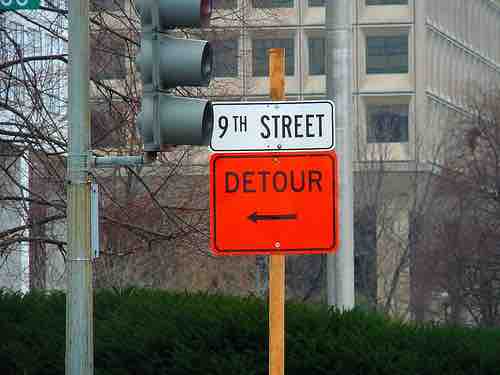Role of Transitions
Introduction: Building Your Speech
Once you have established your goal and identified your target audience, you should take the following steps to construct your presentation.
- Develop a general premise: constructing a presentation will require that you begin by developing your goal and translating it into a general premise you will state to your audience.
- Generate main points and organize them strategically: after you have established a premise, you will be able to generate main points to support this claim. Be sure to coherently organize these main points so that the audience can easily follow your flow of ideas. A maximum of two to five main points will ensure clarity and timeliness. Keep main points separate (transitions separate ideas) and balance the time spent on each point.
- Create an introduction and conclusion: after you have developed your main points, you will need to complete the introduction and conclusion. Create the introduction first—the conclusion really reiterates much of what was said in the introduction. The introduction opens the speech and is responsible for getting the audience's attention, relating the topic to the audience, establishing the speaker's credibility, and previewing the main points of the presentation.
- Fill in transitions: Prior to delivering your presentation, your final step will be to develop transitions that lead your audience between parts of the presentation and between distinct, main ideas.
Take the final step, filling in transitions, seriously. Transitions play an important role in the success of your speech.
The Importance of Transitions
Imagine this scenario. You are driving, trying to get from point A to pont B. At the beginning of your trip, you see a sign telling you that you're going in the right direction. But then you drive and you drive. The road winds. There are detours and forks in the road, but there are no more signs pointing you towards your destination. Are you going the right way? How did you get to this point anyway? What is happening? Where are the signs telling you that the road has changed and you should go this way instead of that way?
In speeches, transitions serve this purpose. Take the road example from above and apply it to your speech:
Members of your audience will do their best to follow you as you speak. However, your speech may take detours. It is bound to move from one subject to the other. Will your audience make the correct connections or get lost? There is also the chance that members of your audience will drift off and when they tune back in will wonder how you moved from talking about X talking about Y. They do not know how you got there .

Detour
Transitions help your audience follow your presentation even when you take a detour.
Proper transitions will not only eliminate such questions, but will also hopefully eliminate the situation in which members of your audience drift off. Transitions enable the flow of a speech. A speech without transitions often seems choppy, and can even seem unorganized. Using them allows your audience to follow your presentation. The words you use can lead them along, signal that you are moving from one point to another, or signal that you are stressing a point.